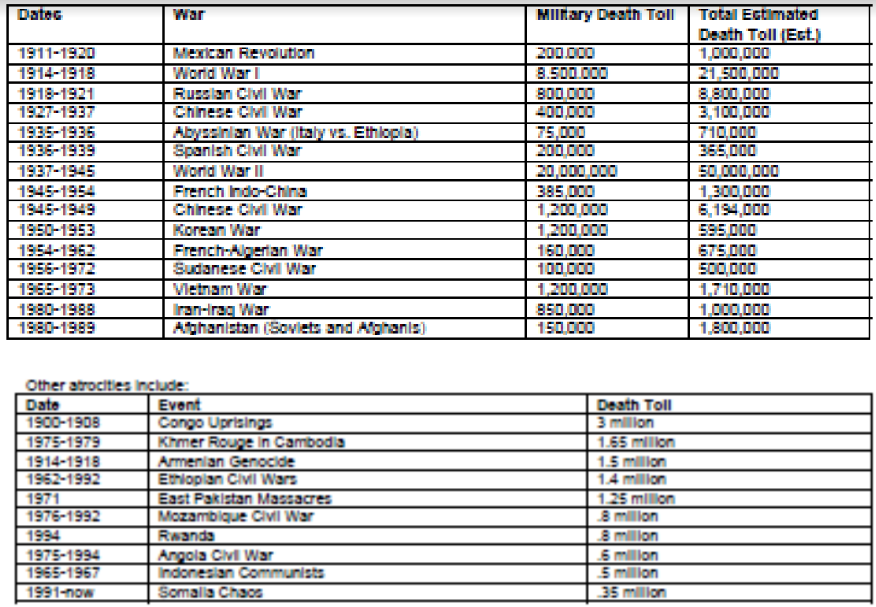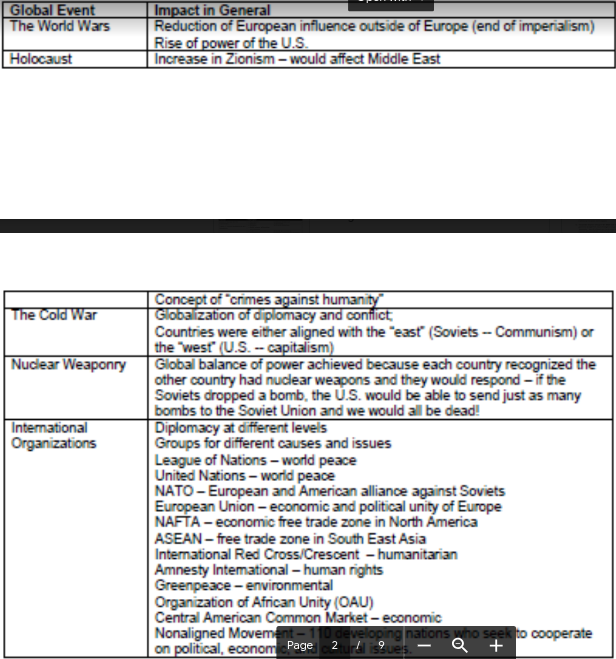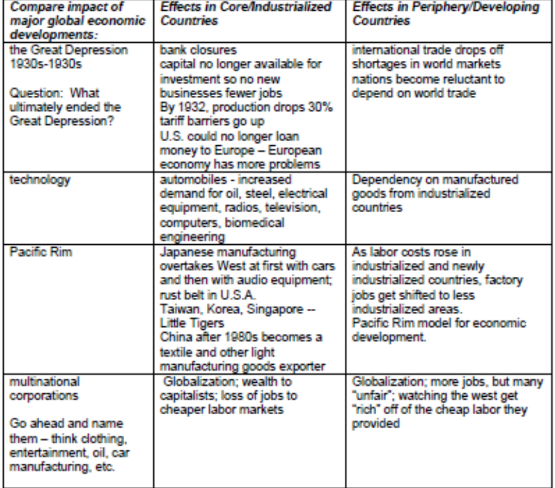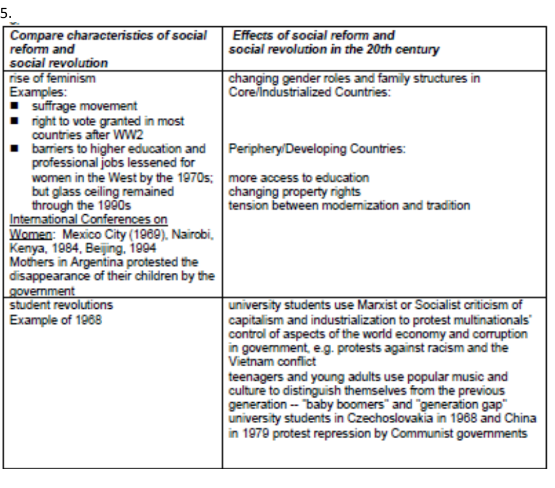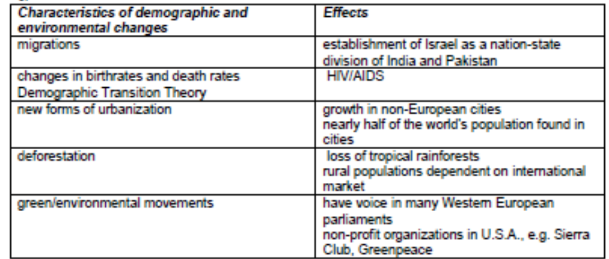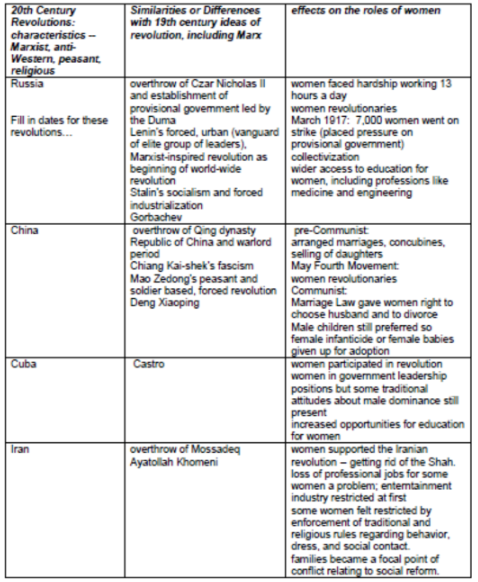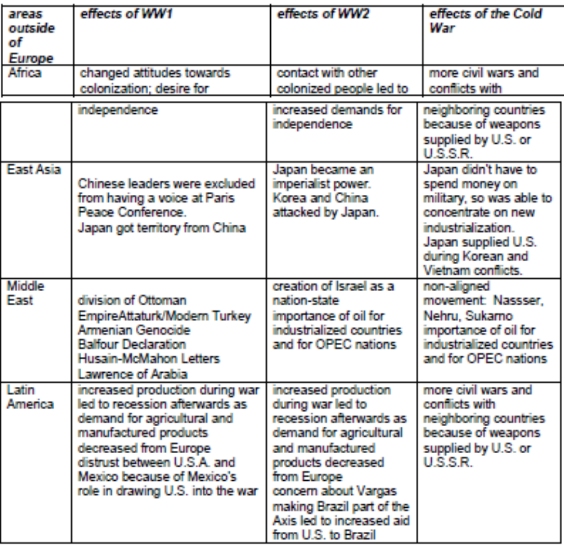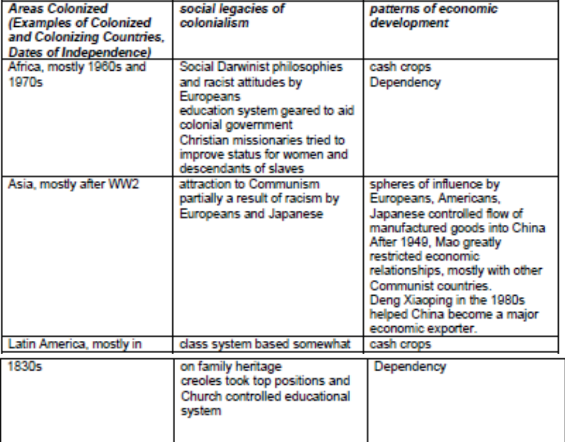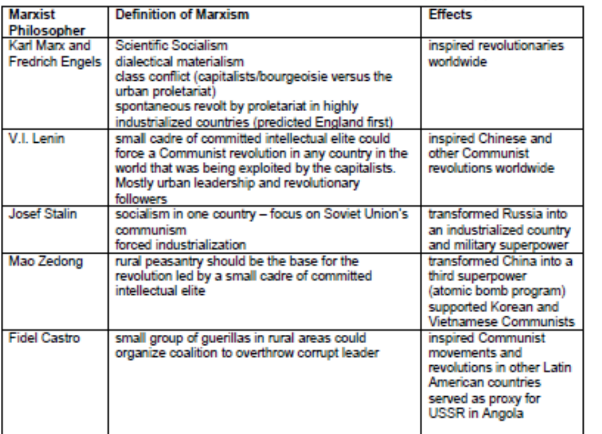cram packet 1900-present
1/16
There's no tags or description
Looks like no tags are added yet.
Name | Mastery | Learn | Test | Matching | Spaced |
|---|
No study sessions yet.
17 Terms
BIG IDEAS:
The 20th Century was a time when the world got “smaller.”
Communication and transportation made it possible to connect to every part of the globe and even into outer space.
The United States came to dominate the world during the 20th century and our culture spread everywhere (McWorld) Not every part of the globe felt comfortable with the Americanization of the world. American values can be interpreted as being based upon consumerism, greed, sex, and violence (remember our movies and music are everywhere). Many societies viewed this as in direct violation of their traditional values.
The United States dominated the world economically and politically. We became the richest country in the history of the world. In many cases our multi-national corporations used cheap labor and cheap natural resources from the underdeveloped world to become extremely wealthy.
The 20th Century has been the most violent century in history.
1. Questions of periodization
Continuities and breaks, causes of changes from the previous period and within this period:
1914 – World War I begins; world becomes smaller through communication and transportation; WWII; end of
imperialism; domination of American culture; Cold War; advanced technology; space race; nationalism
Even though the causes of World War II were rooted in unsettled business from World I, the nature of the war was far different from any previous conflict in world history. Some distinct characteristics of World War II are:
Worldwide participation - The war was truly fought in all corners of the globe. Only eleven countries did not become directly involved in the war: Afghanistan, Greenland, Iceland, Ireland, Mongolia, Portugal, Spain, Sweden, Switzerland, Tibet, and Yemen.
Technology - Although airplanes and tanks had been used to some extent in World War I, they came to dominate World War II. For example, in the Pacific, airplanes attacked from giant aircraft carriers that allowed the United States navy to "hop" from one set of island to the next, finally zeroing in on Japan. In Europe airplanes on both sides bombed their opponents with high explosives and incendiaries that killed millions of people and devastated the infrastructure, particularly in large urban areas. Other technologies, such as radar and more accurate and powerful weaponry, helped submarines and warships to target the enemy. the atom bomb was introduced at the end of the war.
Widespread killing of civilians - Whereas civilian casualties were not unique to World War II, the war is characterized by deliberate targeting of non-military people. Because the bombings sought to destroy the industrial infrastructure, they focused on urban areas where many people lived. In some cases the bombs were intended to torment populations so that the enemy would surrender.
NATIONALISM IN AFRICA
By the early 20th century Europeans had colonized most of the African continent. Christian missionaries set up schools that educated a new native elite, who learned not only skills and literacy but western political ideas as well. They couldn't help but notice the contrast between the democratic ideals they were being taught in class and the reality of discrimination that they saw around them. This observation sparked nationalist movements in many places, including:
Senegal - Blaise Diagne agitated for African participation in politics and fair treatment by the French army.
South Africa - Western-educated natives founded the African National Congress in 1909 to defend the interests of Africans.
Ethiopia - Italy took over Ethiopia in the years leading up to World War II, and Emperor Haile Selassie led Ethiopian troops into his capital city to reclaim his title. Ethiopians, as well as many other people in northern Africa responded to Allied promises of liberation and helped the Allies defeat the Germans that had occupied the area.
POST WORLD WAR II STRUGGLES IN ALGERIA
World War II was a humiliating experience for the French. Their armies had folded under Hitler's blitzkrieg within a few days, and they had to be liberated from German control by the other Allied powers. Both world wars devastated the infrastructure of France, and the weak parliamentary government seemed to have little control over the economy. Despite these hardships (or perhaps because of them), the French were determined to hold on to Algeria and Vietnam in Southeast Asia after World War II ended. French persistence set off major revolts in both areas. In 1954 war in Algeria broke out with great brutality by both sides. In reaction to the government's inability to fight the war, the French government was totally restructured, with strong man Charles de Gaulle taking the reins of the country as its new president. Algeria finally gained their independence in 1962, but lingering bitterness and retaliation led to a stream of French-sympathizers flooding into France from Algeria.
decolonization in africa
The borders of some countries, such as Nigeria and Zaire, encompassed several different ethnic groups that struggled with one another for control of the country. Race conflict became particularly severe in the temperate southern part of the continent, where Europeans clashed with natives for political and economic power. South Africa was left with apartheid, an attempt by European minorities to keep natives in subservient, and very separate, roles in society. The African National Congress, formed in South Africa in 1912, led a bloody struggle against apartheid, which eventually led to success when Nelson Mandela became the first native president of South Africa in 1994.
NATIONALISM
india: Native elite had formed nationalist groups in India before World War I began, and the struggle against British control continued until India finally won its independence in 1947. The independence agreement was complicated because Jawaharlal Nehru, leader of the Indian National Congress, and Muhammad Ali Jinnah, the leader of the Muslim League, clashed openly. Violent riots between Hindus and Muslims broke out in Bengal and Bihar, so that the British negotiated with the two organizations to partition India into two states.
latin america: The Cuban Revolution and its aftermath - Revolutions against dictators were often inspired by communism, especially after the Cuban Revolution led by Fidel Castro in 1959. Military leaders of Brazil led a conservative reaction by staging a coup of the democratically elected government in 1964. There the "Brazilian Solution" was characterized by dictatorship, violent repression, and government promotion of industrialization. A similar pattern occurred in Chile in 1974 where the socialist president Salvador Allende was overthrown in a military coup led by General Augusto Pinochet. Socialist Sandinistas led a rebellion against the dictator of Nicaragua in 1979, where their communist affiliations led them to disfavor with the conservative United States government led by Ronald Reagan. The Reagan administration supported Contras (counterrevolutionaries) who unsuccessfully challenged the Sandinistas. By the 1990s, most Latin American nations had loosened the control by the military, and democratic elections appeared to be gaining ground. However, they continued to be economically and militarily dominated by the United States.
